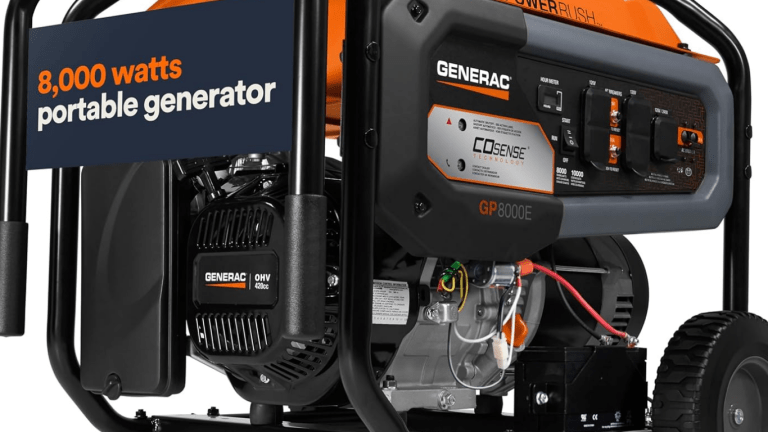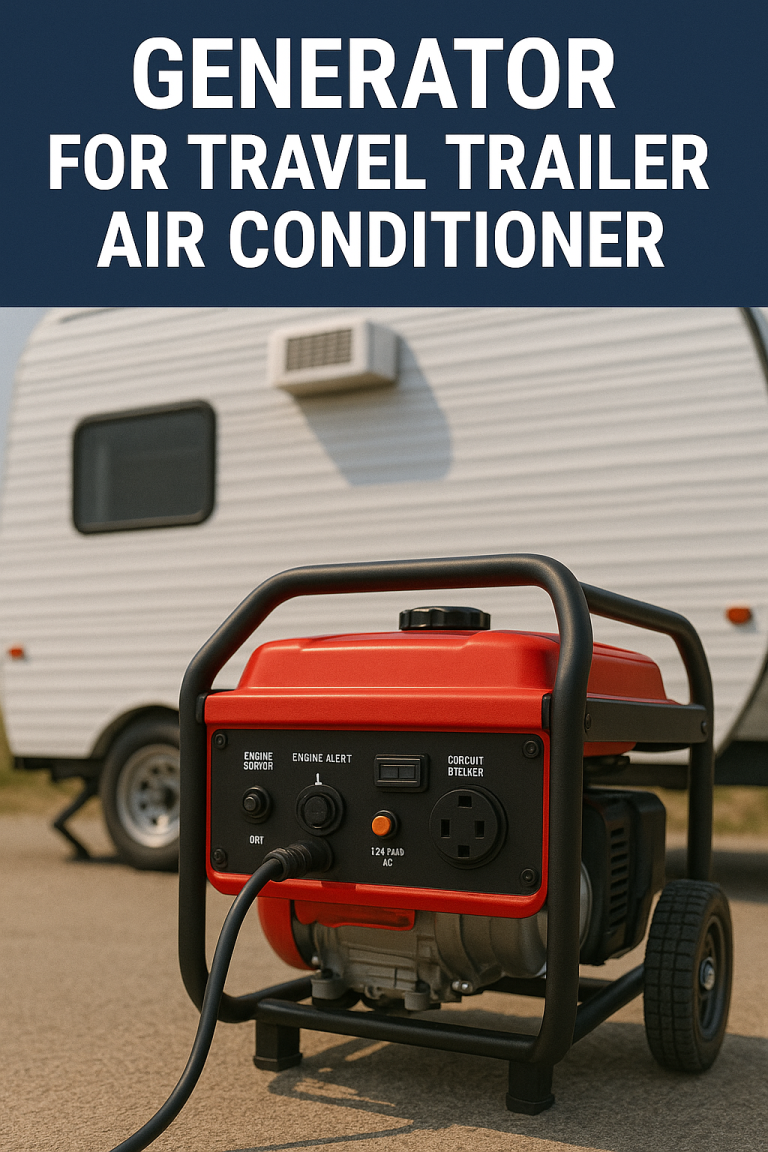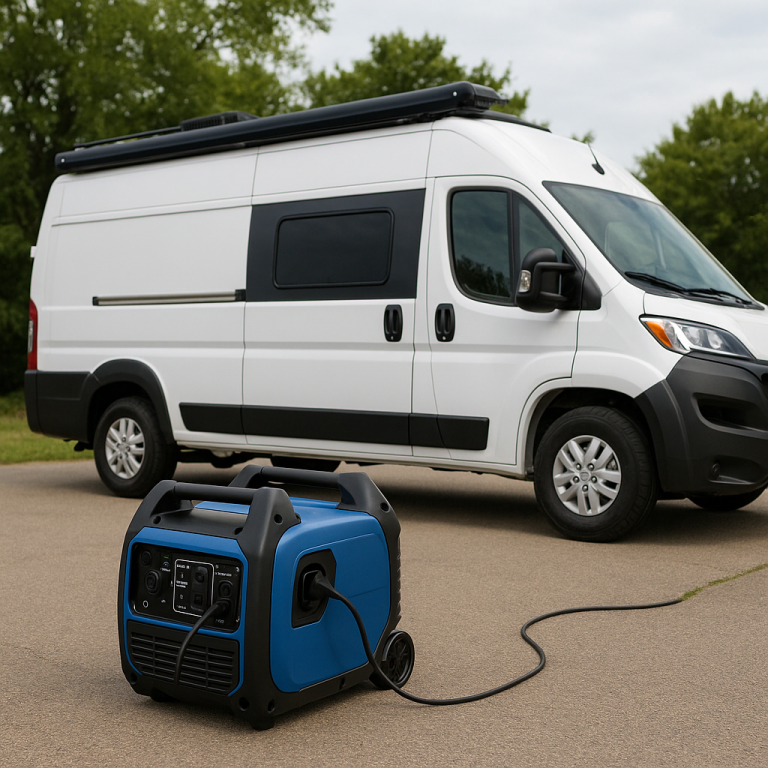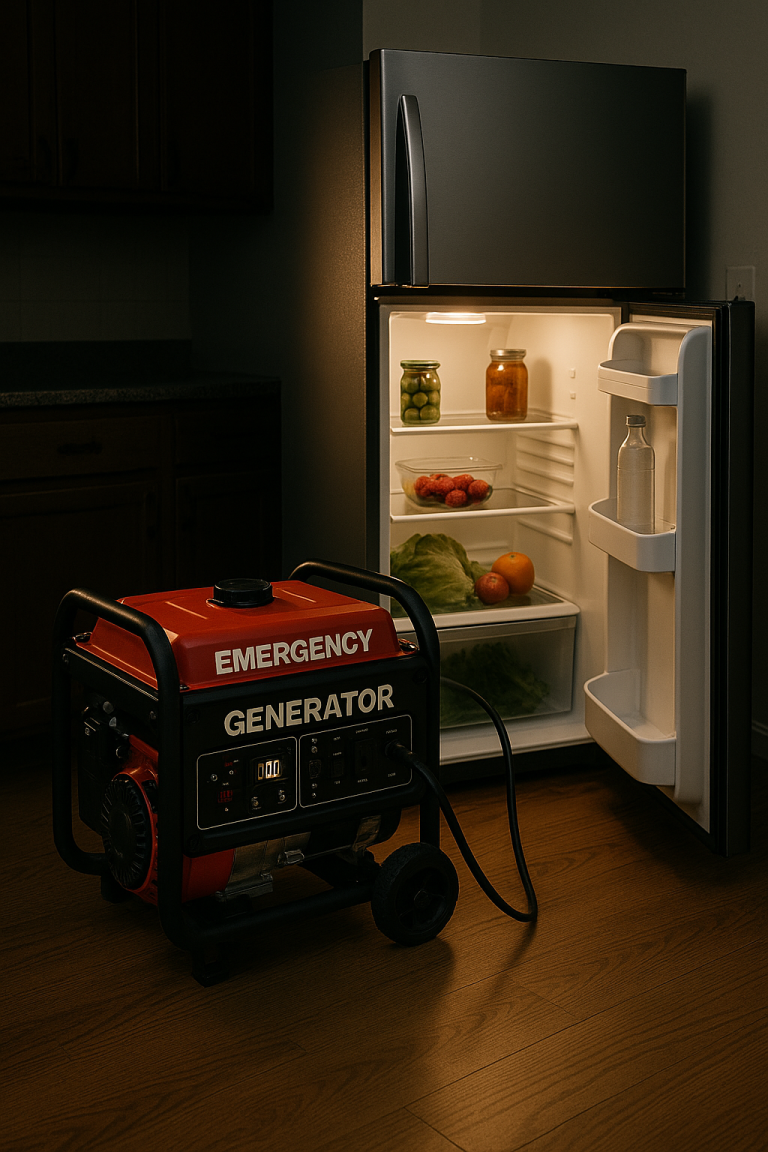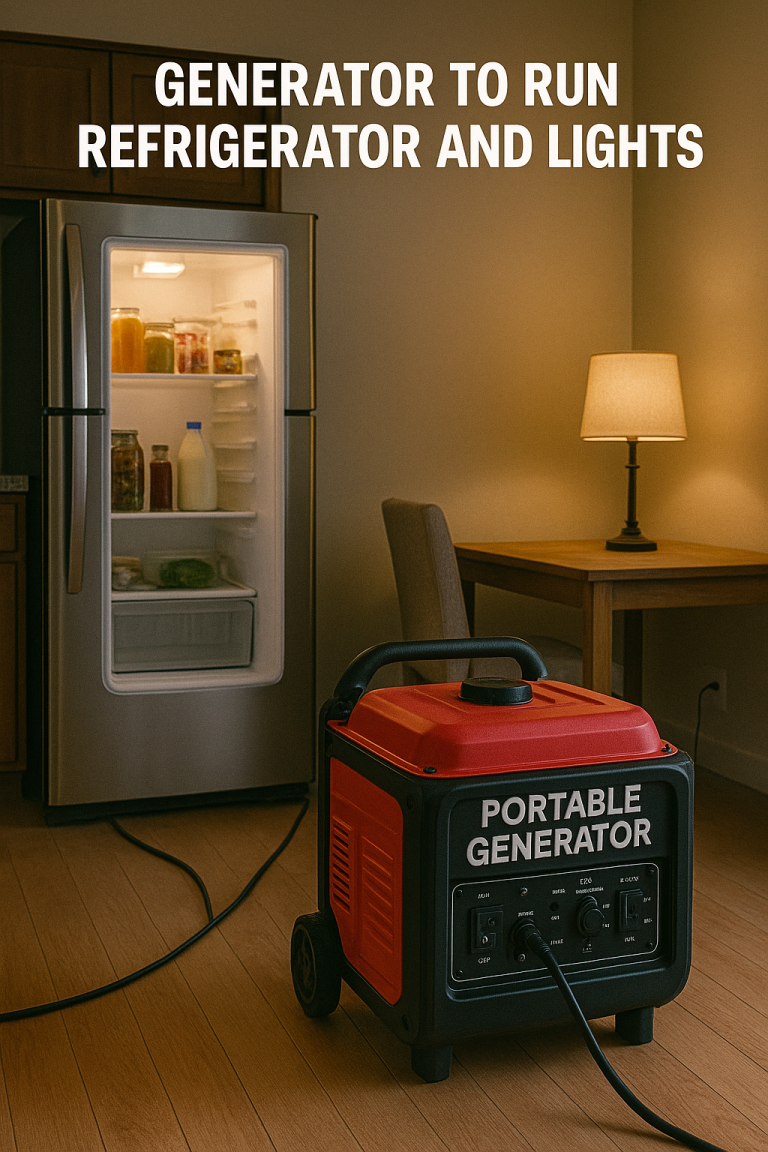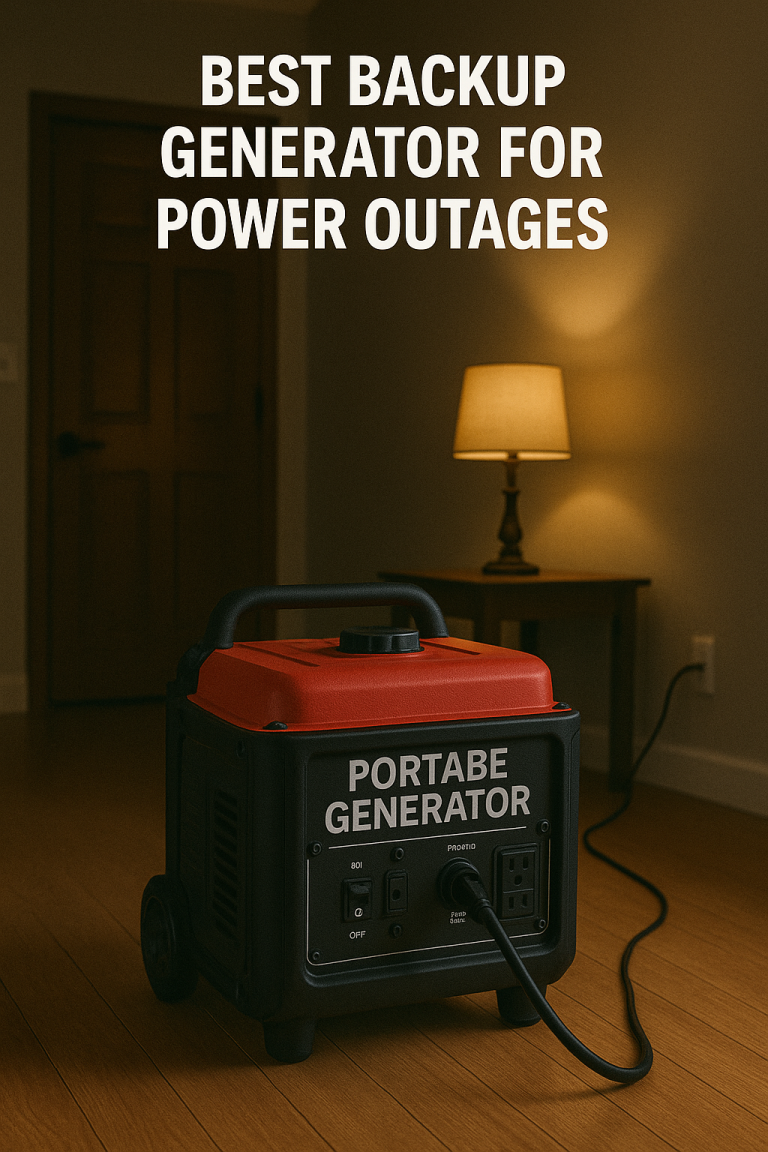Quiet Generator for Tailgating – Power Up the Party Without the Noise
Tailgating is all about great food, good company, and game-day energy — but keeping the party going often requires more than just burgers and team spirit. From powering a TV to running a mini fridge or sound system, reliable electricity can elevate your tailgate from basic to legendary. That’s where a quiet generator for tailgating makes all the difference.
But not all generators are suitable for social settings. A loud, rumbling machine will kill the vibe, annoy your neighbors, and possibly violate venue noise rules. The key is finding a portable, quiet, and efficient generator that gives you all the power you need — without drowning out the fun.
In this guide, you’ll learn what to look for in a tailgating generator, how much power you actually need, and why quiet operation is essential to creating the perfect pre-game setup.
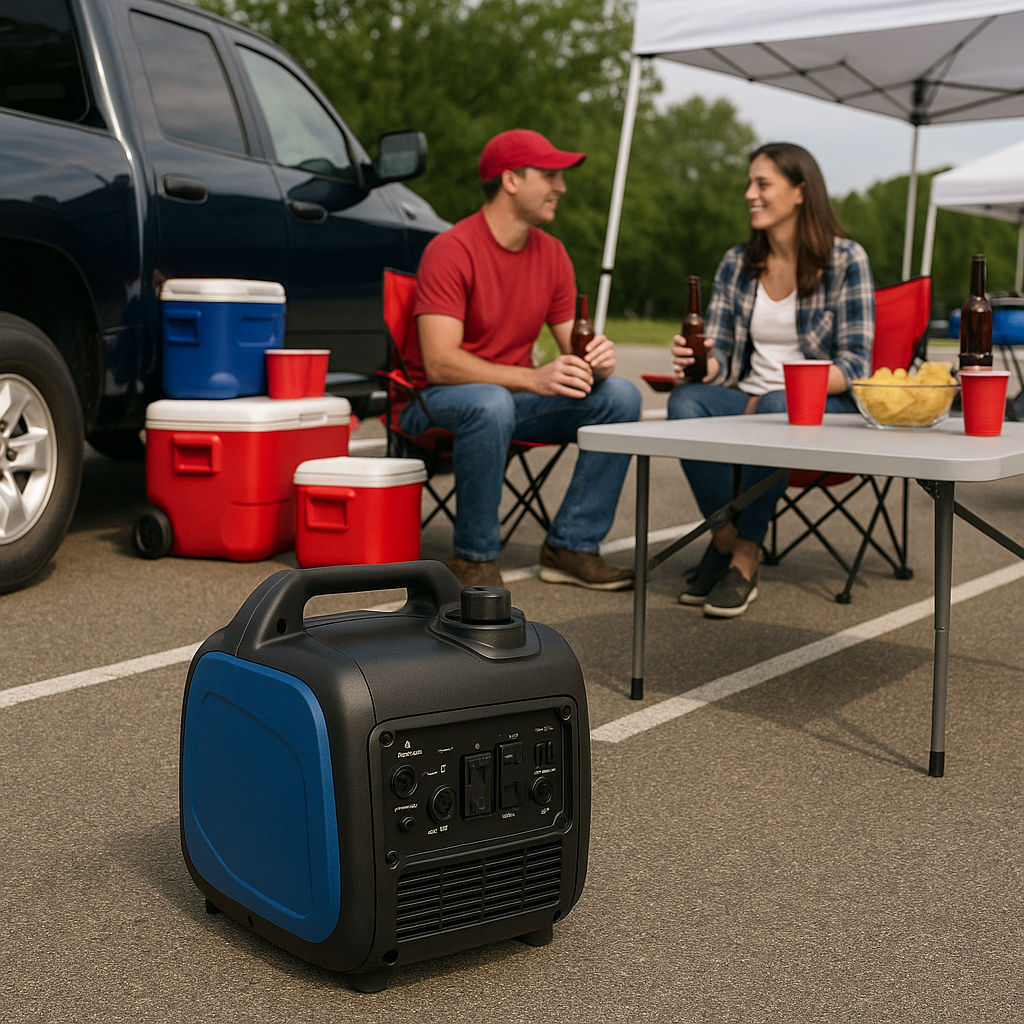
Why Noise Level Matters When Tailgating
Let’s face it — a roaring generator is a buzzkill. Tailgating is a social event, often packed into parking lots or grassy fields with other fans nearby. Whether you’re hosting a few friends or dozens of die-hard supporters, a noisy generator can:
- Drown out music or commentary
- Disrupt conversations and socializing
- Annoy other tailgaters (and venue staff)
- Violate noise ordinances or stadium rules
That’s why a quiet generator — typically under 60 decibels at 25% load — is the gold standard for tailgaters. It runs in the background without drawing attention or causing irritation.
What Makes a Generator “Quiet”?
Several design factors contribute to how quietly a generator operates. When shopping for a tailgating model, look for these key elements:
Inverter Technology
Inverter generators are the quietest on the market. They regulate power output based on demand, meaning the engine doesn’t run full-throttle unless needed. This significantly reduces noise and improves fuel efficiency.
Engine Size and Load Capacity
Smaller engines make less noise. For tailgating, you typically don’t need a massive generator — a model in the 1500–2500 watt range will be more than enough and much quieter than higher-output models.
Enclosed Housing
Modern inverter generators often feature sound-dampening cases or insulated panels that muffle engine noise. These are ideal for tailgating environments.
How Much Power Do You Really Need for Tailgating?
Before picking a generator, figure out what you plan to run. Here are some common tailgating essentials and their approximate power usage:
- Small TV: 100–150 watts
- Mini fridge or cooler: 60–100 watts
- Speakers or Bluetooth sound system: 50–150 watts
- Coffee maker or kettle: 800–1200 watts (briefly)
- String lights or LED lighting: 20–50 watts
- Phone or device charging: 10–30 watts per device
- Electric griddle or slow cooker: 1000–1500 watts
Most tailgaters can get by comfortably with a 2000-watt inverter generator, which provides enough power for multiple devices without being bulky or noisy.
Benefits of a Quiet Generator for Tailgating
Tailgating is about creating atmosphere — and the right generator helps you do just that. Here’s why going quiet is the best choice:
Keeps the Focus on the Game
You didn’t come to listen to a generator — you came to hear the roar of the crowd, the smack of the football, and the cheers of your friends. A quiet generator fades into the background and lets your entertainment shine.
Makes You a Better Neighbor
Tailgaters are a community. Whether you’re parked beside strangers or your best friends, a noisy generator can cause tension. A whisper-quiet unit keeps the peace and might even make you new friends.
Complies with Venue Rules
Some stadiums and venues have decibel limits or even ban generators above certain noise levels. A quiet inverter model ensures you stay in compliance — and avoid getting shut down.
Sets the Vibe for Relaxation
You’re there to have fun, not feel like you’re at a construction site. Quiet operation allows for a smoother, more relaxed tailgate with good music, conversation, and ambience.
Features to Look For in a Tailgating Generator
Beyond just being quiet, the best generators for tailgating are portable, reliable, and user-friendly. Here’s what to prioritize:
Lightweight and Compact Design
You’ll be moving the generator from your vehicle to your tailgate space, possibly on uneven terrain. Look for models under 50 pounds with a carry handle or wheels for easier transport.
Multiple Outlets and USB Ports
Tailgating often involves charging phones, plugging in small appliances, and powering lights or audio gear. Look for at least two AC outlets and one or two USB ports.
Long Runtime
Look for a generator that offers at least 6–8 hours of runtime on a full tank. This keeps your tailgate powered from early setup to post-game breakdown without mid-party refueling.
Parallel Capability
If you need more power for bigger tailgate setups, choose a model with parallel capability, so you can link two units for double the output — without doubling the noise.
Fuel Efficiency
Inverter generators adjust power output based on demand, so they use less fuel than traditional models. This means longer runtimes and less hassle during your event.
Electric Start (Optional)
Some models offer a push-button electric start — handy for getting the generator running quickly and easily. It’s a nice bonus, especially if you’re managing food, gear, and guests.
Tips for Using Your Generator at a Tailgate
Using your generator correctly keeps your tailgate safe, efficient, and enjoyable. Here’s how to make the most of it:
Position It Strategically
Place the generator behind your vehicle or at the edge of your tailgating area, preferably on grass or soft ground to absorb sound. Avoid placing it near people or tables.
Bring Extra Fuel
If you’re tailgating all day, bring a small can of extra gasoline or propane (depending on the model). Just be sure to store fuel safely, away from heat sources and out of traffic areas.
Use a Power Strip
Extend the usefulness of your generator by connecting a power strip with surge protection. This lets you plug in more devices and keep everything organized.
Avoid Overloading
Stick to the wattage limits of your generator. Overloading can cause it to shut down or damage your devices. Know what you’re powering and estimate total usage before plugging in.
Keep It Covered
If there’s a chance of rain, bring a generator cover or pop-up shelter to keep it dry while maintaining ventilation. Never enclose it fully or run it indoors.
Final Thoughts: Quiet Power for Game Day Success
Tailgating is about creating an unforgettable experience — and a quiet generator lets you do that with style and ease. Whether you’re firing up a small TV, powering your speaker setup, or keeping drinks cold in your mini fridge, a silent, reliable power source takes the stress out of pre-game prep.
To recap:
- Choose an inverter generator for the quietest performance
- Aim for 2000 watts of power for typical tailgating needs
- Look for lightweight, fuel-efficient models with multiple outlets
- Prioritize long runtime and low decibel levels
- Use it safely and smartly to maximize fun without hassle
When the game day crowd starts forming, you’ll be ready — powered up, tuned in, and enjoying the tailgate without a hint of engine roar.

